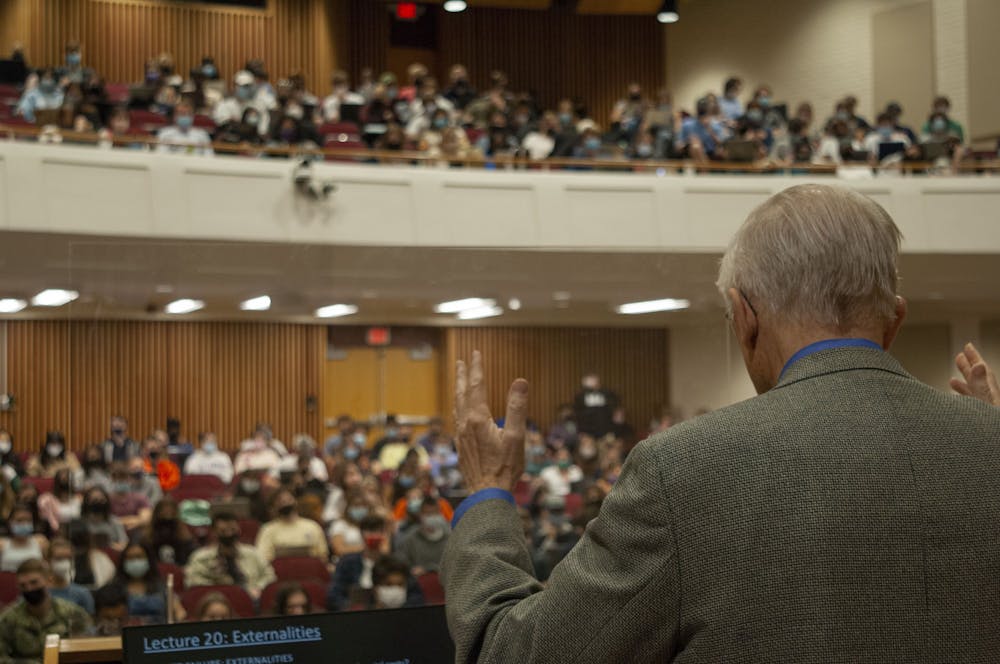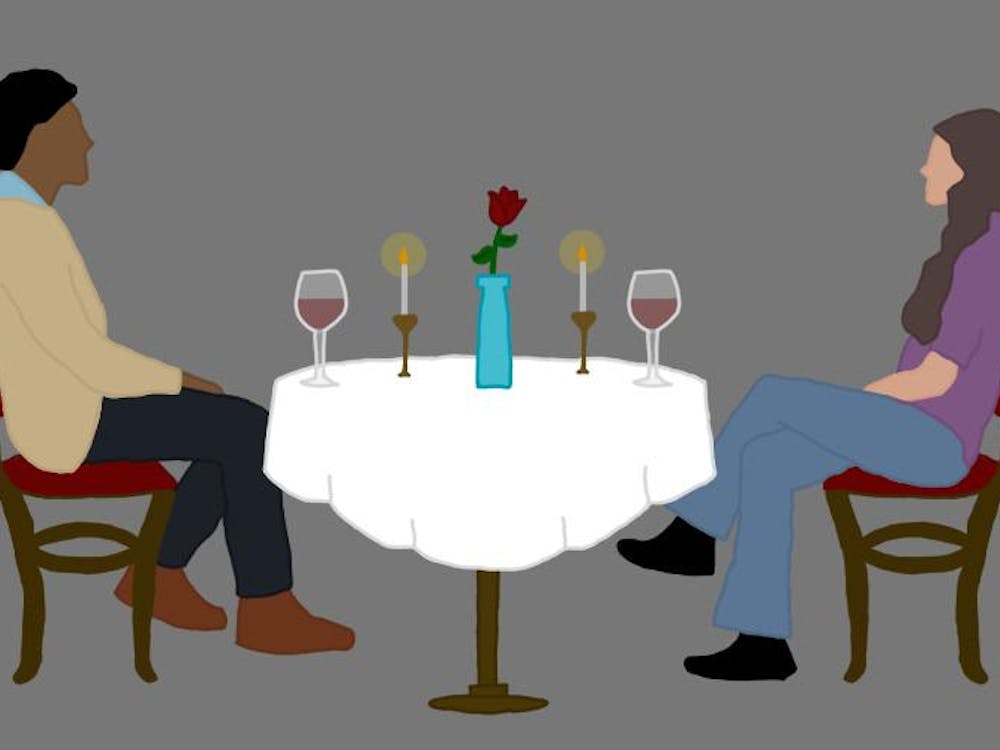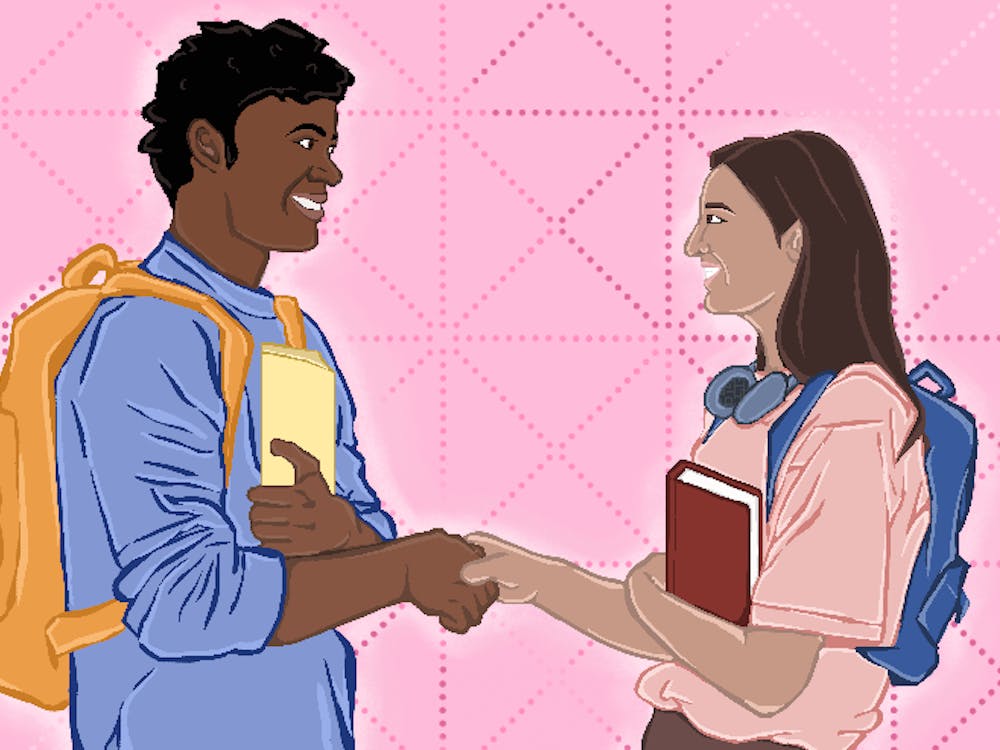When the University announced its official plans for a return to an in-person learning environment for the Fall semester, there was an evident rush of excitement on Grounds in response to the idea of resumed normalcy. Still, one of the few preventative measures against COVID-19 remains in practice since this announcement — the University-wide mask mandate.
Originally slated to be revisited in the early months of the semester, the University ruled in mid-October to prolong the guideline through the end of the semester.
The mandate applies relevant within all University-owned buildings including classrooms, libraries and dining halls. The CDC and U.Va. Health assure masks help prevent the spread of infectious diseases, including COVID-19 and its more dangerous Delta variant.
Although in unanimous agreement on the necessity of masks in the classroom, professors at the University express some of the challenges of navigating a masked learning environment this fall.
In a tweet, Assoc. Commerce Prof. Steven Johnson expressed that initial enthusiasm for in-classroom learning has faded throughout the semester.
“Whatever it is, I'm just not feeling it this morning…” Johnson wrote. “The excitement of returning to in-person instruction has long since worn off and now it's just the long slog of a ‘normal’ semester while still navigating an ongoing global pandemic.”
Johnson furthered the thoughts behind his 180 character-bound tweet in an interview with The Cavalier Daily. He emphasized his mixed emotions about returning to teach in person after having been entirely virtual in the 2020-2021 school year — in addition to his elation, he still had some particular worries.
“I felt quite a bit concerned about knowing that the Delta variant was becoming the most prevalent variant,” Johnson said. “I feel particularly for colleagues that I work with, who have young children at home … they're in a household that has a mix of people that are fully vaccinated and those who aren't. I'm highly in favor of wearing masks indoors, and also I'm extremely thankful for the collective efforts — of students, of faculty, of staff — to keep each other safe.”
One such professor with young children at home is Assoc. Classics Prof. Gregory Hays. Hays mentioned the difficulty of connecting with masked students this fall, even though he is relieved that the mask mandate is in place.
“Masks are irritating for everybody, I think,” he wrote in an email. “They definitely make it harder to hear and be heard, and I had a lot more trouble learning students' names and faces this fall than I usually do. But as the parent of an under-12 I'm very glad the mask requirement is there, and I'm grateful to my students for being conscientious about it.”
Children between the ages of 5 and 11 years old were not eligible to be vaccinated until Tuesday, posing a real risk to Hays who is evidently concerned about bringing any illness from the classroom back home.
Students have mirrored similar sentiments as professors regarding the difficulties presented by masked learning. Moreover, from a student perspective, masked learning proves more difficult to form social connections with classmates and instructors alike.
“It's definitely harder to make connections with other people because you can't see anybody's face,” first-year College student Sasha Porter said. “It's harder to just get to know people if you can't see their expressions and emotions … I think people are just trying to learn how to socialize and interact with others again.”
The transition between online learning and in-person classes has its tradeoffs. As Johnson mentions, there are benefits to a supposedly more relaxed online environment. However, Johnson feels that when he is in a classroom, his students are on a much “more level playing field” — a benefit of in-person learning.
“I worried about equity issues that not all students have a great place — distraction free — to do a Zoom call,'' Johnson said about the online 2020 school year. “If you don't have a high-speed internet connection, if you don't have reliable internet, if you don't have good computing devices, a good camera, or good speaker [or] a good microphone then it's really hard.”
Due to the mixed advantages and disadvantages that have arisen throughout the return to in-person learning, Johnson opted to implement a bit of both worlds into his lesson plans this fall. Outside of in-person classes, he offers alternative options for office hours, including Zoom and outdoor meetings.
Like his colleagues, Assoc. History Prof. John Mason senses the pros and cons of both learning environments. For his seminars, which rely heavily on discussion, Mason notes he is able to successfully mimic in-person classes while teaching online last year through a heavy emphasis on not turning cameras off during class.
“A seminar is not supposed to be everybody listening to the professor, a seminar is supposed to be everybody contributing to the conversation,” Mason said. “[In Zoom], I had 100 percent cooperation with people keeping their cameras turned on and … I really thought we were able to build a rapport and an ease of conversation that was as good as anything I've experienced in the classroom.”
By comparison, even after over half of a semester of in-person learning with masks, many professors are still finding it difficult to place names and faces.
“It's embarrassing,” Mason said. “You want to be able to call your students by their name.”
So for smaller classes, Zoom may offer enough in terms of face-to-face interaction to compensate for their lack of in-person contact. However, for lectures, Mason leans towards in-person teaching as the more beneficial choice.
“In lecture, I suppose it's an easy call,” Mason said. “I'd rather be in the classroom with everybody wearing a mask, but for seminars, everybody in the seminar could fit on [the] screen.”
With this masked, in-person year being just as much a transition as the switch to online learning last year, unexpected challenges are inevitable. Professors and students alike long for the day when learning is able to return safely to pre-pandemic protocols.
“[The goal] is to be in the classroom without a mask,” Mason said. “I hope we can get there someday.”







